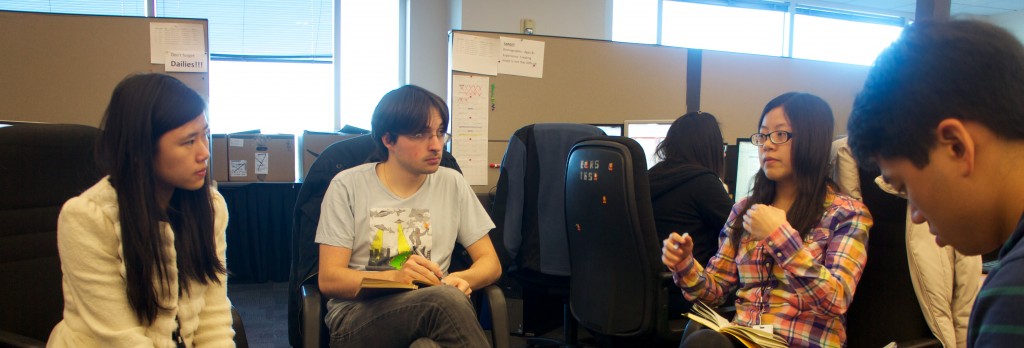
This week, the team finalized branding and began laying down the foundations for the project. The programmers are in a comfortable place in terms of knowing what can be achieved this semester and we are preparing to finalize our design around the tech’s capabilities.
In terms of branding, our color scheme, poster, half-sheet, and general branding elements have all been finalized. Moreover, if you remember our old logo, the G-Clef was on the wrong line of the staff, and that has been fixed. The team cares about music and it is important that we know that it is important to show that in all the things we create.
The big progress this week was in setting up our tech foundations:
The team has settled on using the Sparrow Framework for our app. The key reason was that it was a game engine in Objective-C that seemed easiest for our programmers to approach. The programmers had also been considering Cocos2D and openFrameworks as well. However, openFrameworks, while powerful and integrates certain sound libraries, was a lower-level framework that would have had a steeper learning curve. Cocos2D, while the most successful open-source game engine for iOS, had more features than we needed and also a higher learning curve than Sparrow. We have decided that Sparrow’s access to UIKit and similarity to ActionScript should give us the functionality we need while also being something that our programmers can quickly adapt to.
Cheng also explored pitch detection through the opensource C++ library “dywapitchtrack.” The capabilities looked promising and she was able to quickly script something to draw a pitch line over time based on audio input. We are now also looking ahead at the larger problems of noise filtering and note length detection.
Finally, we had two very helpful meetings with Roger Powell this week. On Wednesday, Pei-lin and Nate met with him to ask broad questions about how to create the sequencer for our app. He highly recommended using FMod as our audio engine, and offered to meet with us again to explain how he created the sequencer for EA’s Music Construction Set 11. On Friday, Roger shared how he accessed specific pitches of instrument samples in the program. Everyone in the meeting was very excited to hear Roger’s expertise on the subject, and he, too, was interested with meeting with us every week. The programming and design teams now feel very optimistic as we move forward.
This week has been a productive week. Perhaps not very tangibly so, but the research and preparations that the team has made this week mean that our spirits are high and we will be able to start next week con brio.
